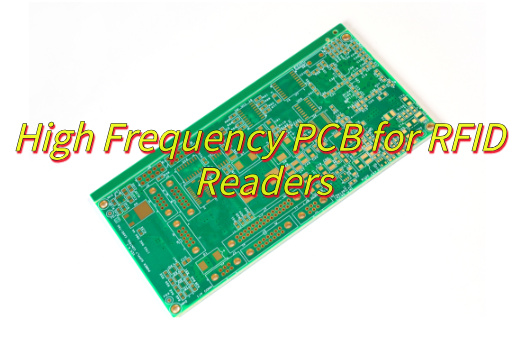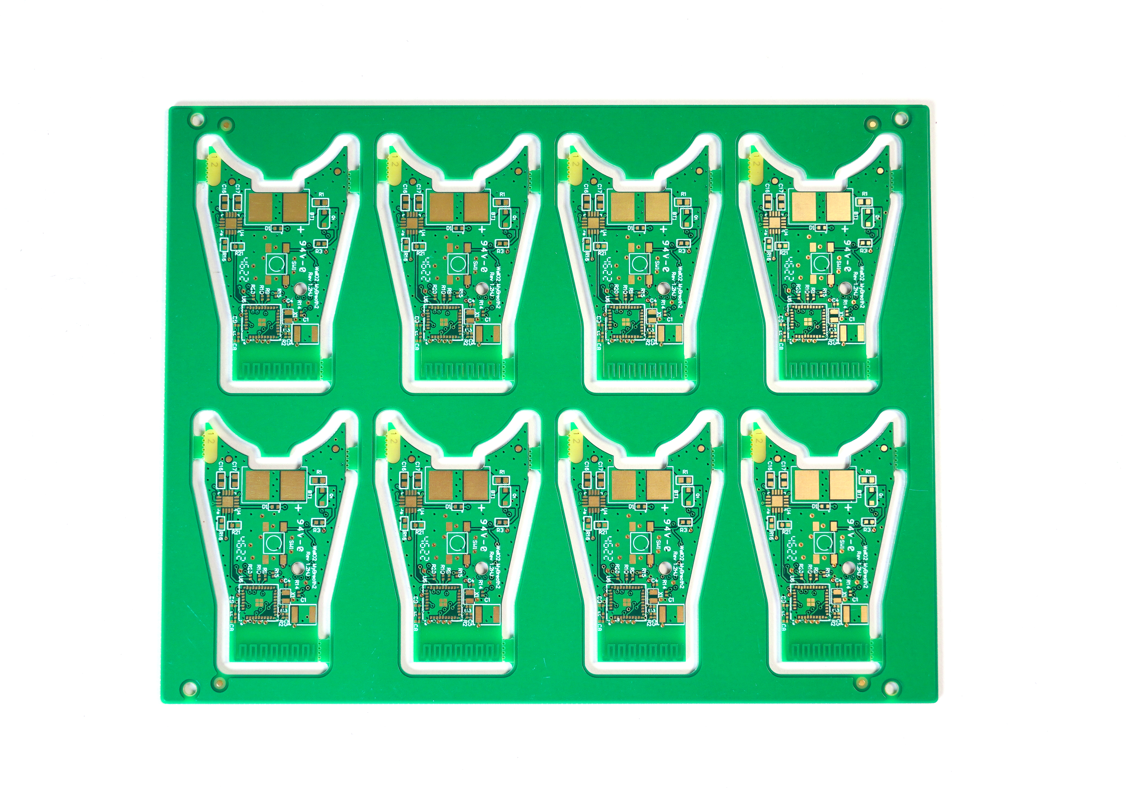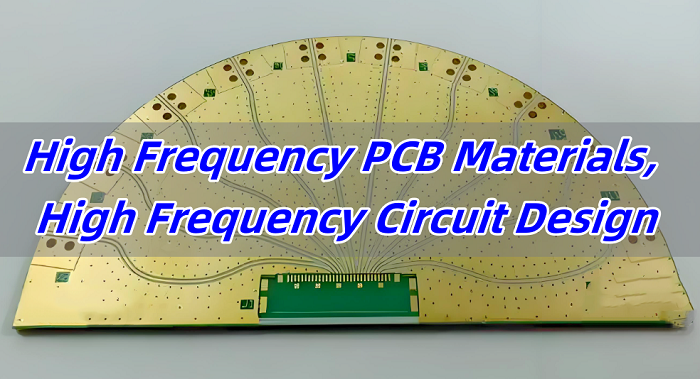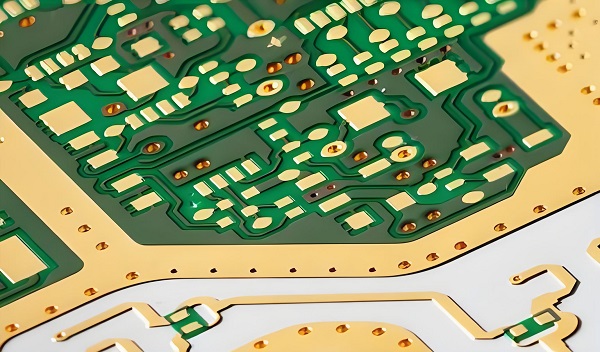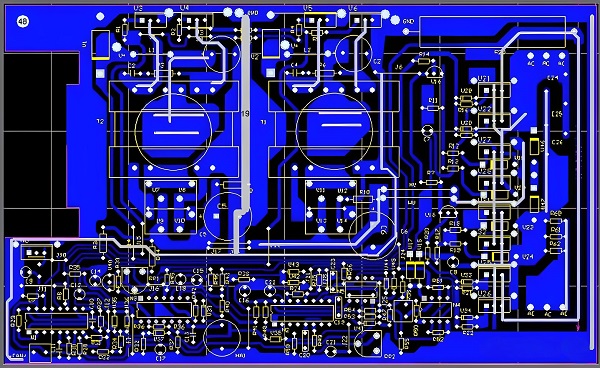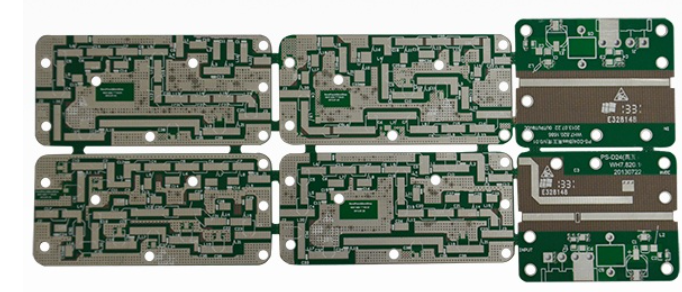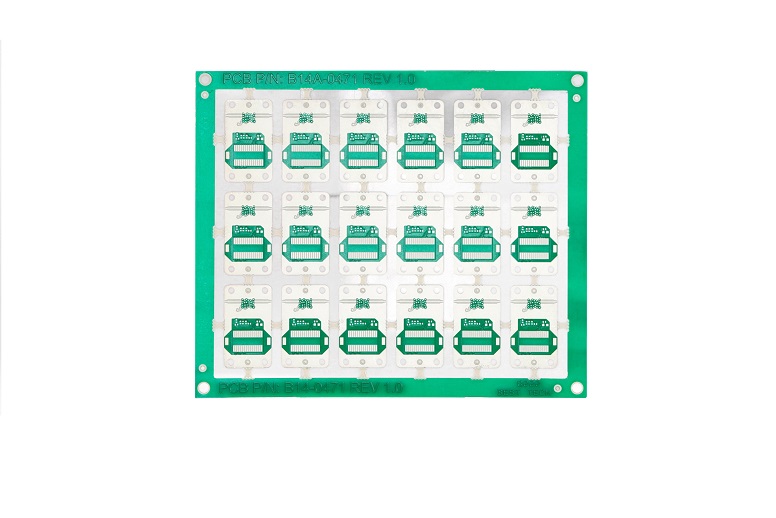High frequency laminate PCB board is the backbone of many modern communication, radar, and aerospace systems. This comprehensive guide covers points that include definition, material, features, layouts, costs, and applications of high-frequency PCBs. Besides, we have covered the insights about how to build a reliable PCB high frequency and where to get high frequency laminate PCB boardā.
Have you encountered these issues in your high frequency PCB communication circuitsāā projects?
- High costs in high frequency laminate PCB board material and manufacturing?
- Greater design complexity and the relatively high requirement of designers?
- Unstable operation due to the improper material selection or poor manufacturing process?
- Full complexity of manufacturing, high requirements of equipment, and process control?
With these actionable solutions, even the toughest challenges can be overcome.
- Optimize material selection: Balance performance and costs via selecting suitable materials of different application needs.
- Boost design: Elevate layout and impedance control through innovative design tools and methods.
- Adjust process control: Ensure the product performance and reliability by cutting-edge manufacturing process and strict quality control.
- Get reliable cooperation and support: Get technical support and solution by collaborating with a professional high frequency PCB manufacturer and material suppliers.
As a high frequency PCB manufacturer, Best Technology focuses on factory price PCB high frequency board prototyping, mass production, assembly with higher quality. Our product portfolio includes high frequency board PCB, high speed DAC board, high speed board, copper busbar PCB, HDI PCB, and others. We hold a competitive edge by improving product performance and effectively tackling customer pain points in high frequency PCB applications. We provide comprehensive technical support in material selection, design optimization, mass manufacturing, and quality control. If you have faced any PCB problems and want to get unique solutions for your projects, we would appreciate it if you could connect with us at sales@bestpcbs.com.

What is High Frequency Laminate PCB Board?
A high frequency laminate PCB board is a printed circuit board designed for high-frequency signal transmission.
- Frequency Range
- Generally, a circuit board with a frequency above 1 GHz can be considered a high frequency PCB.
- With the advancement of technology, more designs are moving into:
- The microwave range (>1 GHz)
- The millimeter-wave range (>30 GHz)
- Design Requirements
High-frequency signals are extremely sensitive to the surrounding medium. Therefore, high frequency laminate PCB boards require:- Specialized laminate materials
- Precise design and layout
This ensures signal integrity, stability, and reliable performance.
- Applications
High frequency laminate PCB boards are widely used in advanced electronic systems where speed and low loss are critical, including:- High-frequency communication equipment
- Radar and navigation systems
- Automotive millimeter-wave radar
- Satellite and aerospace electronics
- Importance of Material
The foundation of a high frequency PCB lies in its laminate material. Proper material selection directly determines how well the board performs in real applications. Key characteristics include:- Low dielectric constant (Dk): Maintains fast and stable signal transmission.
- Low dissipation factor (Df): Reduces energy loss at high frequencies, improving transmission efficiency.
- Excellent chemical stability: Ensures reliability in harsh conditions such as high temperature or humidity.
- Additional Design Considerations
Factors like PCB laminate thickness also influence impedance control and signal quality in high-frequency PCB design. Choosing the right high-frequency laminate PCB board material is therefore essential to achieving both reliability and performance in modern electronic devices.
What is the Best PCB Material for High-Frequency?
1. Material Categories and Characteristics
- Organic Materials (e.g., Glass Fiber/Epoxy, Polyimide (PI), BT/Epoxy)
- Characteristics: Good insulation, easy to process, suitable for medium to high-frequency circuits, moderate heat dissipation.
- Applications: General communication boards, consumer electronics.
- Inorganic Materials (e.g., Aluminum-based, Copper-Invar-Copper (CIC), Ceramic)
- Characteristics: Excellent thermal conductivity, high thermal stability, suitable for high-power and high-frequency circuits.
- Applications: RF modules, radar systems, 5G mainboards.
2. PCB Type Classification
- Rigid PCB: High structural stability, suitable for precision circuits.
- Flexible PCB: Bendable, ideal for space-constrained designs.
- Rigid-Flex PCB: Combines rigidity and flexibility, perfect for complex layouts.
3. Structure Classification
- Single-layer, double-layer, multi-layer boards.
- High-frequency circuits typically use double-layer or multi-layer boards to ensure signal integrity and controlled impedance.
4. Common High-Frequency PCB Materials
- PTFE (Polytetrafluoroethylene): Low signal loss, suitable for microwave frequency applications.
- Ceramic-filled PTFE: Better heat dissipation and mechanical strength, suitable for high-power applications.
- High-polymer Ceramic Materials: High thermal stability and stable dielectric constant, ideal for 5G and radar circuits.
- RF Series High-Frequency Materials (e.g., ROGERS RO4000 series): Good processability, suitable for RF and microwave applications.
5. Leading Brands and Recommended Applications
| Brand | Typical Models | Recommended Applications |
|---|---|---|
| ISOLA | Tachyon 100G | Antennas, RF modules |
| PANASONIC | R-5680 / R-5680N | High-frequency communication, microwave circuits |
| ROGERS | RO3003 / RO4350 / RO4730 | Radar, 5G mainboards |
| TACONIC | RF35 | High-speed signal transmission, RF boards |
| Shengyi | AW300 | High-frequency communication boards, RF modules |
6. Material Selection Tips
- High-frequency signals or radar boards: Choose low-loss, thermally stable materials (ceramic-filled PTFE or ROGERS series).
- Consumer electronics or general communication boards: Consider cost-effective organic materials with good processability.
- High-power or high-heat applications: Opt for inorganic materials or thicker copper cores.
In summary, when selecting high-frequency PCB materials, it is essential to consider signal frequency, power, thermal management, and manufacturing complexity. By understanding the material properties and application requirements, engineers can choose the most suitable PCB material for optimal performance and reliability.
What is the Difference: High-Frequency PCB, High Speed PCB?
High-Frequency PCB
- Definition: Designed to handle high-frequency signals, typically above 1 GHz.
- Key Features: Signals are sensitive to materials and dielectric properties. Key factors include dielectric constant, loss factor, and thermal stability.
- Design Focus:
- Material selection: Low dielectric constant, low-loss materials such as PTFE, ROGERS, or ceramic-filled PTFE.
- Impedance control: Critical for microwave and RF circuits.
- Signal integrity: Minimizing signal attenuation and crosstalk.
- Typical Applications: 5G communication modules, radar systems, antennas, RF equipment.
High-Speed PCB
- Definition: Handles signals that change very quickly, focusing on fast rising and falling edges rather than just high frequency.
- Key Features: Transmission line effects cannot be ignored due to rapid signal switching. Signal integrity, reflections, and crosstalk are the main design concerns.
- Design Focus:
- Trace length and routing: Careful layout to maintain signal integrity.
- Impedance matching: Critical for high-speed data transfer.
- Materials: Often improved FR4 or multi-layer boards, chosen to support high-speed digital signals.
- Typical Applications: High-speed data buses, CPU interfaces, FPGA boards, high-speed memory interfaces.
High-Frequency PCB vs High-Speed PCB: Key Differences
| Comparison Point | High-Frequency PCB | High-Speed PCB |
|---|---|---|
| Core Focus | Signal frequency (GHz and above) | Signal transition speed (fast rising/falling edges) |
| Material Requirements | Low dielectric constant, low loss | Signal integrity, impedance control |
| Common Materials | PTFE, ceramic, ROGERS series | Improved FR4, multi-layer boards |
| Typical Applications | Microwave, RF, radar, 5G | High-speed digital signals, CPU, FPGA, memory |
| Signal Characteristics | High-frequency, attenuation-sensitive | Fast-changing signals, reflection-sensitive |
To conclude, high-frequency PCBs focus on handling high-frequency signals, where material choice is critical. While high-speed PCBs focus on fast signal transitions, emphasizing signal integrity and impedance control. In some cases, both aspects overlapāhigh-speed signals may also be high frequency, requiring attention to both material and design considerations.
What is High Frequency PCB Layout?
1. Keep RF Circuit Layout and Connections as Short as Possible

In high frequency circuits, impedance changes at transmission line corners can cause signal reflection. High-frequency signals may radiate as electromagnetic energy into the surrounding space. As a result, the signal level may drop after a ācorner.ā
Therefore, when designing high-frequency circuits, the RF layout must be carefully planned so that the corner angles of RF traces are minimized.

If there is enough space on the board, arrange RF components in as straight a line as possible. Straight-line placement and routing help prevent signal reflections and maintain signal levels to meet design requirements.
Key Point: In low-frequency circuits, right-angle traces can work normally. However, in high-frequency circuits, even minor variations in trace width affect the characteristic impedance, causing reflections and reducing signal levels.
2. Use Components or Rounded Corners at RF Trace Bends to Minimize Impedance Discontinuity

Following the principle of avoiding impedance discontinuities, if space allows, prioritize short and straight RF trace routing. If corners are unavoidable, avoid 90Ā° or 45Ā° angles. Use rounded traces instead. If a right-angle turn is necessary, place components strategically to create the turn through component positioning. This approach minimizes signal reflection caused by impedance changes.

Key Point: In high-frequency circuits, improving RF trace layout is crucial. Always follow the principle of avoiding characteristic impedance discontinuities.
3. Provide Separate Ground for Each Pad; Avoid Sharing Ground Vias

High-frequency PCB design requires careful management of RF trace-to-GND connections. In the picture above showing the incorrect design, multiple RF component ground pads share a single via to the GND plane.
In the picture below showing the optimized design, each ground pad is connected to the GND plane through its own nearby via. This minimizes the ground loop and reduces noise.

Key Point: Compared with conventional circuits, high-frequency circuits require strict control over GND connections. Each ground pad should have its own via to the GND plane for the shortest connection path.
4. Maintain Symmetry in RF Balun Differential Traces

When designing high-frequency circuits, special attention must be paid to routing within the same circuit section. For example, in the balun circuit shown above, the left and right traces are asymmetric.
In the improved balun circuit shown below, the RF trace length is shortened and the layout is kept symmetrical.

Key Point: Trace layout significantly affects performance in high-frequency circuits.
5. Widen Clearance in Reference Layers for 50Ī© RF Traces

For PCBs combining RF and high-speed signals, RF traces require controlled 50Ī© impedance, and high-speed lines also require impedance control. For example, a 50Ī© single-ended or 100Ī© differential line may use very narrow traces (e.g., 4mil for BGA areas) for high-speed routing. However, RF traces must minimize insertion loss, which includes dielectric loss, conductor loss, radiation loss, and leakage loss. Increasing RF trace width can reduce insertion loss, but width is not always better. For microwave and millimeter-wave applications, excessively wide traces can generate unwanted parasitic signals and affect transmission.
Typically, RF trace width is around 20mil (matching 0402 pads), but wider traces increase the distance to the reference plane. Impedance is mainly affected by dielectric thickness, dielectric constant, trace width, copper thickness, and solder mask thickness. Among these, dielectric thickness and trace width are most significant. Impedance is usually controlled by adjusting either the trace width or the dielectric thickness.
High-speed lines may use 4mil width, whereas RF lines require 20mil. If both reference the same plane with fixed dielectric thickness, achieving the same impedance is impossible. To address this, designers adjust the RF trace impedance by creating a āsplit reference layerā: place the RF trace on the top layer, clear the second layer underneath, and reference the third layer to increase dielectric thickness.
However, clearance areas require careful sizing. Simply copying top-layer RF traces onto the second layer as clearance is insufficient. The copper on the second layer can still affect impedance. The clearance should be at least three times the RF trace width.

How is High Frequency Laminate PCB Board Cost?
The cost of a high frequency laminate PCB board is influenced by multiple factors that go beyond just the raw materials. From a readerās perspective, itās important to understand not only why the cost is higher but also what value they gain from it.
1. Laminate Material Choice
The type of laminate is the biggest driver of cost. PTFE-based laminates, for instance, are more expensive than standard FR-4 because they deliver low loss, stable dielectric constant, and reliable performance at gigahertz frequencies. Hydrocarbon or ceramic-filled materials may reduce cost slightly but still carry a premium compared with conventional boards.
2. Layer Count and Stack-Up
A simple two-layer board is much more affordable than a 6- or 8-layer high frequency design. Each added layer increases not only material cost but also the complexity of lamination and drilling. Customers often need controlled impedance in multiple layers, which further adds to expense.
3. Processing Complexity
Manufacturing high frequency boards demands precision. Things like tighter trace width control, plated through-holes with strict aspect ratios, and smooth copper foils increase production difficulty. These steps consume more time and raise yield risk, which reflects in pricing.
4. Additional Testing and Tolerances
Controlled impedance testing, dielectric constant verification, and stricter quality checks are often mandatory in RF or microwave PCBs. These extra processes add cost, but they are necessary to guarantee stable signal transmission in critical systems.
5. Order Volume and Lead Time
Prototypes or small-volume runs typically cost more per unit due to setup charges. Lead time also impacts pricing ā urgent jobs require production line adjustments, which may add a premium.
6. The Value Perspective
While customers sometimes worry about hidden charges or fluctuating costs, itās worth seeing these expenses as an investment in reliability. A cheaper material or less accurate process could lead to signal loss, overheating, or premature failure. Paying more upfront often prevents higher costs from rework or product failure later.
7. How Best Technology Helps
At Best Technology, we provide transparent quotations that break down each cost factor clearly, so there are no surprises. Our MES system tracks every process step, offering full traceability and accurate lead time updates. Customers benefit not only from reliable products but also from feasible solutions, knowing there are no hidden costs or blind spots in communication.
How to Build a High Frequency Sound Emitter PCB?
1. Understanding the Core Function
- A high frequency sound emitter PCB is essentially a simplified high frequency signal generator.
- It works by combining two key parts: an audio oscillator and a high frequency oscillator.
- The audio oscillator produces low-frequency signals, while the high frequency oscillator generates a carrier wave. Together, they create a modulated high frequency output that drives piezoelectric components.
2. Design Specifications to Consider
- Operating frequency range: Multiple bands are often required, e.g. from hundreds of kHz up to tens of MHz.
- Power supply voltage: Stable supply is crucial to avoid signal distortion.
- Output power: Must be sufficient to drive the piezoelectric emitter effectively.
- Modulation type: Basic amplitude modulation (AM) is commonly used.
- Signal purity: The waveform should remain stable and low in distortion for consistent acoustic output.
3. Key Circuit Building Blocks
- Audio Oscillator: Often an LC-based oscillator, designed to produce a 1kHz reference audio signal. Proper biasing and transistor selection help ensure stable oscillation.
- High Frequency Oscillator: Typically a transformer-feedback or LC oscillator, generating tunable carrier waves. It must support multiple frequency bands with smooth adjustment.
- Modulation Section: Combines the audio and high frequency signals, producing an amplitude-modulated output.
- Output Stage: Provides sufficient energy and stability for driving the piezo element without waveform distortion.
4. Material and PCB Considerations
- Laminate selection: High frequency laminates with stable dielectric constant (Dk) reduce signal loss and maintain frequency stability.
- Copper thickness and PCB stack-up: Affect both impedance control and acoustic performance.
- Grounding and shielding: Critical for reducing noise, especially in RF and audio combination circuits.
5. Challenges for Beginners
- Poor material choice often leads to unstable oscillation.
- Improper grounding can create unwanted noise in the output.
- Incorrect component values or layout may cause difficulty in tuning frequency ranges.
6. Support from Best Technology
- Our engineering team assists customers from schematic design through PCB layout and assembly.
- Guidance on material selection, oscillator tuning, and EMI control is provided.
- With MES tracking, clients gain transparency across every production stage, saving both development time and cost.
What are the Uses of High Frequency PCB Communication Circuits?
1. Role in Telecommunication Networks
- High frequency PCBs are essential in telecom infrastructure, especially in wireless base stations, antennas, and microwave equipment.
- Their low-loss characteristics and strong anti-interference capability ensure higher transmission efficiency and stable connections.
- With the rise of 5G and beyond, demand for high precision and reliable high frequency PCBs is growing rapidly.
2. Applications in Wireless Communication Devices
- Widely used in smartphones, Wi-Fi routers, and wireless networking equipment.
- Support higher transmission rates and extended communication ranges, meeting the increasing demands of modern users.
- Their stable signal transmission reduces distortion and attenuation, improving user experience in daily wireless communication.
3. Use in Radar Systems
- Radar applications rely on accurate high frequency signal processing for detection and tracking.
- High frequency PCBs, with their low dielectric loss and high dimensional stability, enhance radar sensitivity and resolution.
- Commonly integrated into radar antennas, signal processors, and control modules to ensure precise performance even in complex environments.
4. Importance in Satellite Communication
- Satellite systems require long-distance, high-frequency data transmission.
- High frequency PCBs offer low-loss transmission, heat resistance, and high reliability, critical for space-grade equipment.
- Used in both transmitting and receiving modules, they help improve satellite communication quality, speed, and consistency.
5. Broad Impact Across Industries
- Their reliability makes them valuable not only in commercial telecom but also in medical imaging, aerospace, and defense systems.
- Certifications such as ISO 9001, ISO 13485, IATF 16949, and AS9100D ensure compliance with strict quality and safety standards. Best Technology ensures quality through implementing these quality standards.
- As communication technology evolves, future trends point toward higher frequencies, faster data rates, and lower signal loss, expanding their application prospects.
Where to Get Best High Frequency Laminate PCB Board?
Choosing the right supplier is as important as the board itself. Best Technology provide you with best high frequency laminate PCB boards. The following points give us a competitive edge in world markets.
MES System: Our factory is equipped with a fully digitalized workshop and warehouse, enabling comprehensive product traceability. Every product can be traced back to the responsible personnel, equipment, and suppliers.
Strict Quality Control: We have professional quality supervisors, engineers, and complete testing equipment. Our bare board pass rate reaches 99%, while SMT quality pass rate is 98%. For special products, complex processes, or customer complaints, our QC team conducts real-time inspections and follow-ups to ensure products meet standards and are delivered smoothly.
Professional Technical Capability: Our engineers receive regular product knowledge training, and all operational procedures are standardized through SOPs to ensure consistent production quality.
Long-term and Stable Supply Chain: We establish strategic partnerships with key suppliers to guarantee stable material supply and consistent quality. Detailed supply chain plans are implemented to ensure production flexibility and the ability to respond to unexpected events.

To sum up, the demand for high frequency laminate PCB board continues to rise as industries shift toward faster and smarter systems. This blog explores high frequency laminate PCB boards: design tips, materials, costs, layouts, applications, and building high-frequency circuits. If you need high frequency design PCB manufacturing, just feel free to let us know at sales@bestpcbs.com.
FAQs
1. What is the 20H rule in PCB?
- The 20H rule is a guideline used in PCB design to determine the threshold for considering a signal as high-frequency. It states that if the signalās wavelength is less than 20 times the trace length (H = trace height), transmission line effects become significant, and high-frequency PCB design principles must be applied. This helps designers decide when to treat traces as transmission lines to avoid signal reflections and integrity issues.
2. How many Hz is considered high-frequency?
- In PCB design, high-frequency signals are generally considered to be those above 1 GHz. However, some applications treat signals in the hundreds of MHz range as high-frequency, especially if precise impedance control and signal integrity are critical. Essentially, any frequency where PCB layout, material properties, and trace effects significantly impact signal quality qualifies as high-frequency.
3. What is the 3H rule in PCB?
- The 3H rule is a practical guideline for determining when a PCB trace behaves as a transmission line. It states that if the trace length is longer than three times the height (H) of the dielectric between the trace and reference plane, transmission line effects such as reflections, impedance mismatch, and signal distortion should be considered in the design. This is especially important for high-speed or high-frequency circuits.
4. What is the 5W rule for PCB?
- The 5W rule is a simplified guideline used for high-speed PCB layout. It suggests that if a trace length exceeds five times the trace width (W), signal integrity issues like reflections, ringing, or crosstalk may occur. Designers can use this rule to quickly assess whether transmission line effects need to be analyzed and controlled for critical signals.



